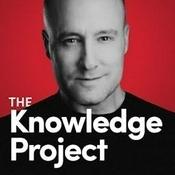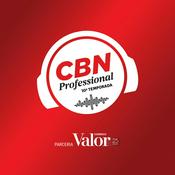227 episódios

Overcoming Project Freeze: How to Start When You Feel Stuck
14/12/2025 | 14min
"I believe that this nation should commit itself to achieving the goal, before this decade is out, of landing a man on the Moon and returning him safely to the Earth." That was President John Kennedy in 1961, speaking at the Joint Session of Congress. It is possibly the best example of a project statement ever made. Links: Email Me | Twitter | Facebook | Website | Linkedin Join the Time And Life Mastery Programme here. Use the coupon code: codisgreat to get 50% off. Get Your Copy Of Your Time, Your Way: Time Well Managed, Life Well Lived The Time Sector System 5th Year Anniversary The Working With… Weekly Newsletter Carl Pullein Learning Centre Carl’s YouTube Channel Carl Pullein Coaching Programmes Subscribe to my Substack The Working With… Podcast Previous episodes page Script | 397 Hello, and welcome to episode 397 of the Your Time, Your Way Podcast. A podcast to answer all your questions about productivity, time management, self-development, and goal planning. My name is Carl Pullein, and I am your host of this show. Starting projects. It can be tough. Where do you start? Where will you find the time? And what do you need to do? These are just some of the questions you will find yourself asking. Yet the biggest obstacle to completing a project on time is overthinking and over-planning. Thinking about and planning a project are not the same as working on one. Working on a project is doing something that moves it forward. Decorating your bedroom will require paint and brushes. The only pre-project decision you need to make is what colour. The first two steps, therefore, are: Decide what colour to paint the bedroom Buy paint and brushes I would add a third decision: when. When will you do it? Once you’ve done those three things, you’re ready to go—no more planning, no more thinking. Just get on and start. Yet, that’s not how most projects go, is it? There’s thinking, planning, then creating tasks in your task manager, and if it’s a work project, a meeting, then perhaps another meeting. Often, by the time a project is conceived, 80% of the time required to complete it gets spent on thinking, planning, and meetings. And that brings us nicely to this week’s question—a question about finding ways to reduce the thinking and planning time. So, let me now hand you over to the Mystery Podcast voice for this week’s question. This week’s question comes from Phil. Phil asks, “Hi Carl, how do you work on complex projects?” I find I spend a lot of time planning a project, end up with a long list of things to do, and when it comes to starting, I freeze. It’s as if I don’t know where to start. Do you have any tips on handling this type of problem? Hi Phil, thank you for your question. “Project freeze” is a common problem for many people. I suspect this stems from the belief that every aspect of a project needs to be planned before starting. Yet, for many projects, this would be impossible. Imagine you were part of NASA in May 1961, and you’d just heard President Kennedy’s speech at the joint session of Congress about why the US should put a man on the moon and bring him back safely to earth before the end of the decade. At that time, NASA was struggling to get even the smallest of rockets into space—the idea of sending astronauts to the moon and back was a pipe dream. Yet a group of incredible people at NASA in 1961 took on the challenge. Instead of planning every single step they thought would be needed to complete the project, they looked at what they already knew, the obstacles they would need to overcome, and the first steps. That gave birth to the Mercury space mission. The Mercury programme was not to put a man on the moon; its objectives were to orbit a crewed spacecraft around Earth, study the human ability to function in space, and ensure the safe recovery of both the astronaut and the spacecraft. Before they could reach the moon, they needed to understand how humans cope in space. So the project’s objective was to send a man into Earth’s orbit. The key was to get started, and they did this by listing out the obstacles they needed to overcome first. They then worked out how to remove those obstacles. Now, I know our projects are unlikely to be as big as sending someone to the moon and back, but we can adopt the same approach that NASA used to work on our projects. Even small projects can adopt this approach. Let’s say you were asked to do a presentation on the likely effects of AI on your company’s business over the next five years. Where would you start? For something like this, there would be several phases. The first would be to research and gather information. For this, the task would likely be to find out who to ask or what to read. Okay, when will you do this? Here’s the key point. It’s no good just deciding what needs to be done first. You need to make it intentional, and to do that, you will need to set aside time to do it. Perhaps you decide to give yourself an afternoon to research this. Research is a challenge in itself. We can go down rabbit holes that bring no meaningful insights into what we are trying to do. Yet, we can also underestimate how much time is required for research. So the first step is to do an initial session of research to help you develop some boundaries. You might be lucky and find that the first research session gives you everything you need to start the presentation. However, if not, and you discover you need to do more research, then when will you do that? One thing you can do with creating a presentation is to set up your PowerPoint or Keynote file. Create the document, do the first slide and perhaps set the theme colours. Having a document started makes it much easier to get into creating the presentation. The danger of listing out all the things you think you need to do to complete the project is that 80% of what you think needs to be done doesn’t, and you will find that 80% of what ends up being done were things you never thought of in the first place. All you really need is a starting point. I recently did a video on how to write a book. The number one reason people who want to write but never do write a book is that they overthink and plan it. Thinking and planning do not produce a book. The best way to write a book is to get the first draft written as fast as you can. All that is required is a few ideas about what you want to write about. From there, you start writing the first draft. The first draft will be the worst state your book will ever be in. It’s meant to be messy, unstructured and occasionally unreadable. But, once you have a first draft, you have around 80,000 words you can manipulate, craft and organise into a best seller. Without that first draft, you have nothing but a few ideas. How do you write a first draft? Set aside time each day to write. An hour or two every day for eight weeks will give you your first draft. As you write, new ideas will form, and you can make a note of those along the way. That will make your editing easier. The common denominator with any project is to get started. Everything has a starting point. Wherever that is, start there. It’s as you are working on the project that your next steps reveal themselves. When I first began creating online courses, I had no idea what I was doing. But what I did have was fifteen years of teaching experience, and I knew how to create a lesson plan. I also knew what I wanted to create an online course on. So I could create a lesson plan and a topic. That was where I started. Once I had a lesson plan, I realised I needed a storyboard of sorts to help me break the course down into lessons. That evolved into the outline I have written for every course I have created since. Now, after eight years of creating courses, I have a process I follow. All I need is a topic and time to plan, outline, record, edit and post. (Five steps) On big projects, many tasks are completed before the project ends. Yet, if you were to try to predict what needs to be done at the start, you will find you are wasting a lot of time. NASA had no idea whether a human being could survive in space. What they did know was that they needed to develop a reliable rocket to get them into space. So, they began with that. Without the rocket, it didn’t matter whether a human could survive in space or not. There would have been no way of getting them there. In 1962, NASA didn’t know that they would need software to keep the spacecraft on the right trajectory. There was no way they could have planned for that at that point. It was only when they began working on the Gemini programme that they realised software would be needed. Without paint and brushes, it wouldn’t matter what colour you wanted to paint your bedroom. In many ways, when you’re working on a large, complex project, you’re solving problems as you go along. Yet, there’s always going to be a starting point. Another thing about bigger projects is setting a deadline. Because we are not sure how long a large project will take to complete, it can be tempting to set an unrealistic deadline. Three months to complete a project that realistically would take twelve. This is why setting up the project’s stages will help you. What’s the first stage? Give yourself a realistic time frame to complete that first stage. The information you gather during that first stage will guide you with the deadlines for the next stage. I would also take another leaf from NASA’s book. President Kennedy said, “before the decade is out”. Given that he made this speech in 1961, NASA had around 9 years to complete the project. Yet it was not absolute. Theoretically, the deadline was 31 December 1969, but the actual deadline was a grey area until NASA got closer to achieving the goal. Deadlines are good as they bring energy to the project. Yet, unrealistic deadlines bring nothing but stress to a project. I know an online course will take me about 6 weeks to complete. I know the process, and I’ve learned from experience that the whole process takes six weeks. If I were to stop doing all my other work, close my calendar to appointments and work solidly for fourteen hours a day for two weeks, I might be able to complete the course in two weeks, but all I would have is a lot of stress. Not pleasant. Six weeks gives me time to bring the course to life, check things, and make sure everything fits together. And the final part of developing any project is to be clear about your outcomes. I refer you back to the opening quotation from President Kennedy: "I believe that this nation should commit itself to achieving the goal, before this decade is out, of landing a man on the Moon and returning him safely to the Earth." A perfect project outcome statement. It’s clear about the objective, and there is a timeline. There was nothing else for NASA to know. President Kennedy didn’t have the skills or knowledge to do this himself; that was for the scientists and engineers to work out. Something they did with magnificent effort on the 20th July 1969. Thank you, Phil, for your question and thank you to you, too, for listening. It just remains for me to wish you all a very, very productive week.

The Chaos Trap: How to Reclaim Control in a Busy Environment
07/12/2025 | 15min
"In an age of speed, I began to think, nothing could be more invigorating than going slow. In an age of distraction, nothing can feel more luxurious than paying attention." — Pico Iyer How do you feel when you have nothing to do but enjoy your surroundings? Where nothing is urgent, and you can enjoy the moment you are in? Never felt it? Maybe that’s a problem you need to fix. Today’s world makes us feel that everything must be done now, yet it doesn’t. If you were to slow down, step back from time to time to think, you’d get a lot more important things done and eliminate much of what is unnecessary. Links: Email Me | Twitter | Facebook | Website | Linkedin Join the Time And Life Mastery Programme here. Use the coupon code: codisgreat to get 50% off. Get Your Copy Of Your Time, Your Way: Time Well Managed, Life Well Lived The Time Sector System 5th Year Anniversary The Working With… Weekly Newsletter Carl Pullein Learning Centre Carl’s YouTube Channel Carl Pullein Coaching Programmes Subscribe to my Substack The Working With… Podcast Previous episodes page Script | 396 Hello, and welcome to episode 396 of the Your Time, Your Way Podcast. A podcast to answer all your questions about productivity, time management, self-development, and goal planning. My name is Carl Pullein, and I am your host of this show. Slow down. There, I’ve said it. If there were one distinguishing characteristic of those who control how they spend their time and when, it would be that they are slow. Not in a negative way, more in an intentional way. They meet their deadlines, are never late for appointments and have clearly had time to read through the meeting preparation notes. Even in one of the most stressful occupations, that of being a special forces soldier, they are trained to slow down. The US Navy SEALs have the expression “slow is smooth. Smooth is fast”, and I know from talking with former members of the UK Special Forces that a large part of their training is focused on slowing down and being deliberate with their actions. Of course, the problem here is that when you’re faced with twelve urgent Teams messages, you have five missed calls from an important customer, and your next appointment is about to start, the last thing your instincts will tell you to do is to slow down. Yet it is precisely in those situations that slowing down and being intentional about what you do next is what you do. Slowing down calms your over-anxious mind, and when your mind is calm, you make better, more rational decisions. And slowing down is what this week’s question is all about. So, to kick us off, let me hand you over to the Mystery Podcast Voice for this week’s question. This week’s question comes from Hanna. Hanna asks, Hi Carl, I work in a very busy Pharmaceutical company, and from the moment I step through the door at work, it feels like chaos. My phone never seems to stop ringing, and my Teams feed looks like it’s alive. It’s always moving! The day’s a blur. What can I do to slow things down and regain some control? Hi Hanna. Thank you for your question. One of the things I’ve learned is that we do have control over the speed of the day. I know often it feels like we don’t, but we do. The reason is that we always have choices, even when it often feels like we don’t. You can choose to answer your phone or let it run to voicemail. You can choose to answer those urgent Teams messages immediately or not, and you can choose to go to the staff rest area and make yourself a nice cup of tea. Unfortunately, it’s natural for us to head straight into the storm of those phone calls and messages. And when we do that, we start conditioning ourselves to do it consistently. Yet maybe the best thing you can do is pause, make that cup of tea, and strategically plan your approach. This is often what I call the tactical retreat. Step back, pause, and look at what’s currently on your plate and your most important tasks for the day. However, you will only be able to do that if you can move from being a firefighter to becoming a fire prevention officer. Firefighters charge straight into every issue with only one intention: putting the fire out. Fire prevention officers: pause, look at the bigger picture, and seek ways to prevent the fires from starting in the first place. In all companies, you need both types of people. You’re not going to prevent every crisis or urgent issue. Yet many can be prevented. I gave one example in last week’s episode. If you have ten equally urgent messages to reply to, you’re going to have to choose which one to respond to first. If you don’t have a process or a strategy for handling that situation, you will panic. Panicking slows you down because the act of panicking creates a lot of activity, yet nothing happens to deal with the messages. The strategy I suggested was to use the first-in-first-out approach. Deal with the oldest first. This way, even if the last message you received is from your angry boss, at least you won’t have to deal with eight angry customers as well. And let’s be honest, if you were to give yourself fifteen minutes to deal with these messages, nobody would be waiting more than fifteen minutes for your response. There is one trick you can use every day that will help you slow things down. That is to protect the first thirty minutes of the day to get a handle on the day. Hopefully, you won’t have a crisis every day, but those first thirty minutes give you a chance to review your Teams messages, emails, and your plan for the day. You can also speak with your colleagues to see what’s happening and deal with anything urgent that popped up at the start of the day. More often than not, you won’t need the full thirty minutes, but you have it protected, and on the days you don’t need it, you can make yourself that lovely cup of tea. Another trick is to give yourself a proper screen break between work sessions. Now, this will depend on the kind of work you do. If you were a graphic designer, an accountant or a journalist, a lot of your work would be spent sitting in front of a computer screen. If you were to stop after ninety minutes, get up, and walk somewhere for ten minutes without a screen, that screen break would give you time to stop and think. That thinking might be what element you can add or remove from the design you are creating, or where to place a particular paragraph in the article you are currently writing. Getting away from your screen allows your brain to relax. It’s when your brain is relaxed that you make better, more rational decisions. Yet, when we are under deadline pressure, stepping away for ten minutes is often the last thing we feel we should do. When you return, allow yourself 20 minutes to address any messages that may have come in while you were locked away doing focused work. Sometimes I find it helpful to look at the messages before I take the ten-minute break. That way, I can think about the responses while I’m relaxed. If you’ve found yourself reacting without thinking all the time, and from the moment you wake up, it feels like you’re go-go-go, that may be a sign you need to retrain your brain to slow down. The best way to do this is to set aside 30 to 45 minutes each morning. This time must be focused on you. Not your partner or kids. It’s time dedicated to yourself. You could write a journal or develop a slow, deliberate morning coffee ritual. Perhaps you could add some light stretching or go out for a morning walk. As long as it’s focused on you and the things you enjoy doing, you’ll find that this morning routine helps to rewire your brain to slow down. Now for an unusual one. Avoid unnecessary conveniences. Part of the Reason we all feel rushed today is the speed at which things can be done. We can order home-delivered food, have our laundry picked up and delivered clean and ironed, order our weekly supermarket shop online, and have it delivered straight to our door later that day or the next. Convenient, yes. Good for us, no. I recently saw a video about why people in the UK began gaining weight alarmingly from around the late 1970s onwards. Yes, there was a shift in our diet. In 1979, Marks and Spencer introduced their first ready meal. It was their famous chicken Kiev, and it sparked a revolution in how families cooked. The M&S chicken Kiev was introduced at around the same time microwave ovens began taking off, and suddenly people were eating ready-made meals. No more “real” cooking. Boiling vegetables, cooking meat, it was pre-packaged and additive-riddled food that could be cooked in less than ten minutes. Then there were more and more convenient ways to travel. People stopped walking to the shops. People working in offices would walk the two metres to their car in the morning, drive to their office, park in the underground carpark, and walk the five metres to the lift (elevator) to arrive at their office, having walked no more than ten metres. Then to spend the rest of the day sitting behind a desk. All in the name of convenience. Yet, this convenience is causing us to speed up. Walking is one of the best ways for us to slow down. It’s one reason why studies show owning a dog can reduce stress and improve health. Dogs need walking. For me, walking Louis is one of my favourite times of the day. I get to think without a screen, get some fresh air and relax. And given that Louis will stop and investigate every tree and lamp post, it’s a slow walk. And the final tip is to plan your day before you finish the day. In other words, give yourself ten to fifteen minutes before you close out the day to review your appointments for tomorrow, curate your task list for the day based on how much time you have between meetings, and allow for the unknowns—there are some. Then pick your two must-do tasks, make sure they are highlighted and stop. You cannot do everything in one day, but doing a little often moves things forward, and soon things you thought would take hours are almost complete. Yet, in my experience, the most significant cause of our feeling that we have no control over our day or time is the way many people are chained to a screen. The current statistics indicate that over 7 hours a day are spent in front of a screen (and that does not include TVs). The problem here is that messages, emails, news alerts and much more are a constant stream. The more time you spend looking at your screen, the more anxiety you feel that you are falling behind with everything. When this happens, you are no longer in control; instead, your devices are controlling you. Yet if you were to go out for a twenty-minute walk after lunch, or do your own grocery shopping each week, you would find yourself slowing down naturally. Add that to perhaps reading a real book in the evening and spending 30 to 40 minutes in the morning doing yoga, meditation, or journaling. You’ll find that much of the speed anxiety many of you feel will start to disappear. As for walking into your workplace and getting caught up in the rush of things, take a deep breath, make sure you know what your two most important items of work for that day are, and between sessions of work, get up, move around, make yourself some tea or coffee and think about what one thing you need to do next. I hope that helps, Hanna. Thank you for your question, and thank you to you too for listening. It just remains for me now to wish you all a very, very productive week.

Is Time Management Actually a Waste of Time?
30/11/2025 | 16min
"The mind is like water. When it's turbulent, it's hard to see. When it's calm, everything becomes clear." — Kobe Bryant Kobe Bryant was definitely onto something when he spoke those words. If you’re not in control of your commitments and have no idea what needs to be done next, you’re going to be stressed. And stress, like turbulent water, makes it hard to see where you should be spending your time. Links: Email Me | Twitter | Facebook | Website | Linkedin Join the Time And Life Mastery Programme here. Use the coupon code: codisgreat to get 50% off. Get Your Copy Of Your Time, Your Way: Time Well Managed, Life Well Lived The Time Sector System 5th Year Anniversary The Working With… Weekly Newsletter Carl Pullein Learning Centre Carl’s YouTube Channel Carl Pullein Coaching Programmes Subscribe to my Substack The Working With… Podcast Previous episodes page Script | 395 Hello, and welcome to episode 395 of the Your Time, Your Way Podcast. A podcast to answer all your questions about productivity, time management, self-development, and goal planning. My name is Carl Pullein, and I am your host of this show. What’s the point of learning how to be more productive and to be better at managing our time? Are we not just shuffling work around—work that will need to be done at some point anyway? Well, yes and no. Historically, people went to work, often in factories, where they performed repetitive manual labour. When their workday finished, they “downed tools”, clocked out and went home. As there were no TVs or smartphones, people often played cards or board games with their families, read books or went to the pub. It was easy to leave work at work. It was easy to manage our time. There was personal time and work time, and the two did not mix. Today, it’s very different. Most of you listening to this podcast will likely be working in what is commonly called “knowledge work’ jobs. You’re not hired for your muscles. You’re hired for your brain. And this causes us a problem. Manual labour meant you did a hard day’s work, and when you went home, you could forget about work. In knowledge work, it’s not so easy to stop your brain from thinking about a work problem. I remember when I worked in a law firm, I caught the bus home and often spent most of the journey thinking about an issue with a client and trying to figure out the simplest way to solve the problem. In the past, people would have looked forward to getting home to their families. When you’re mentally distracted in that way, it’s hard for you to switch off and enjoy that time with your family and friends. Today, it also means there’s no barrier—except our own willpower—to sending an email or a Teams message at any time of the day or night. In the past, the factory gates were locked, or someone else was doing your job on the night shift. It wasn’t possible to work beyond your regular working hours. Time management was much easier. Not so today. And that nicely leads us to this week’s question. And that means it’s time to hand you over to the Mystery Podcast Voice. This week’s question comes from Michael. Michael asks, Hi Carl, I’ve spent years struggling with time management, and it’s got to the point where I think there’s no point. As hard as I try, there’s always something that needs to be done, and I never get a chance to finish anything and end up with everything being urgent. Is there any point to all this time management and productivity stuff? Hi Michael, thank you for your question. In many respects, you might be right that managing time, or at least trying to, is a waste of time. (I think there might be a pun there) As I alluded to, with knowledge work and the explosion of communication tools over the last few years, things that could have waited a day or two now seem to have to be dealt with immediately. It’s not that the task is suddenly urgent; it’s a combination of people’s expectations and the delivery system. The problem here is that no matter how fast the delivery system becomes—or other people’s expectations— we are human. We can still only do one thing at a time. That is not going to change in our lifetime. And that’s where to start—understanding that you, as an individual, can only work on one thing at a time. In other words, if you have ten equally urgent messages to reply to, you’re going to have to choose which one to respond to first. Now, you could come up with a complex, convoluted system for deciding which message to respond to first, or you could adopt a more straightforward first-in-first-out approach. Start with the oldest and work your way through your list of messages. What are we talking about here—perhaps a ten-minute delay for you to get to a particular message? Does ten minutes really matter? You’re not trying to save someone’s life in an emergency room, are you? Messages are often more time-sensitive than emails, and I find that responding to them between work sessions works best. For instance, if you were to protect 9:30 to 11:30 am for focused work. That’s two hours where you are technically not available. Once you finish that session, check your messages and respond to any that require a response. When I set these barriers of doing undisturbed, focused work for two hours a day, I used to panic every time my phone dinged. I felt I had to respond immediately. Of course, that was not true. It never was, and it’s still not true for any of us today. It took a few weeks to wean myself off panicking every time a message came in, but the results were fantastic. My productivity went through the roof, leading to fewer urgent tasks. Our brains are not good at handling interruptions to the flow of work. I’ve seen studies showing that even a minor interruption can take you up to 18 minutes to refocus and get back to where you were before. Think about that for a moment. Even if you were taking ten minutes to refocus and getting an average of six interruptions per day, you’ve lost an hour. Or to put it into a better perspective, that’s 12 ½ per cent of your work day gone. Wasted. By responding to messages between work sessions, you avoid losing focus and get more work done in less time. And it’s there that you will find fewer urgent tasks to do. Because you are getting more done in less time, you will be able to stay on top of projects and other work without getting too close to the deadline. Another area that can make us feel that managing our time is a waste of time is focusing on the number of tasks rather than the time we have available. Again, this is linked to the fragility of being human. We are affected by how much sleep we get, our mood, and our diet. Have a bad night’s sleep, then a fight with your kids over the breakfast table and a sugary doughnut as a midmorning snack, and you’re not going to get a lot of work done. You have a sleep debt, you’re worked up by the argument, and that doughnut is going to give you a massive energy crash. This is why estimating how long a task will take is challenging. I’ve been writing a 1,000-word blog post every week for around ten years now. You’d think I would be able to estimate reasonably accurately how long writing 1,000 words would take after writing over 500 blog posts. Ha! No chance. Some days I can write the first draft in forty-five minutes, other days it can take me two hours. The biggest effect on how long it will take me is sleep. If I get my seven hours, I know it’ll take me less than an hour. Less than six hours, and I’m struggling to do it in two hours. A better approach is to allocate time for doing groups of linked tasks. For example, group all your actionable emails and set aside 40 to 60 minutes at the end of the day to deal with them. This way, it doesn’t matter how many emails you have to act on; you do as many as you can in the time you have. If you’re doing this every day, you’ll soon find you have no email backlogs. What amazes me is the people who try this for a few days and give up because their huge backlog of actionable emails is not getting significantly smaller. Well, of course not. If you’re starting with six hundred actionable emails, it’s going to take you a long time to get that under control. What you could do is set aside a one-off period to get that backlog under control first. Then set a time each day to keep it under control. Or make sure you have a “net-gain” with your responses. For instance, if you get 20 actionable emails in a day, respond to at least 21. That’s a net gain. If you do that consistently over a few weeks, your backlog of actionable emails will reduce significantly. You’re not going to lose the holiday weight you gained in a few days. It might have only taken you a few days to gain that weight, but it’s going to take you a few weeks, if not months, to lose it. (Life’s tough, isn’t it?) Most of the reasons why so many people quit making necessary changes, whether in their work or personal life, are linked to the initial difficulty of change. All change is difficult at first. You’re changing. But soon that change becomes your norm, and then it becomes easy. It becomes “just what you do”. There’s a time and place for the things you want to or must do. This is where your calendar comes into play. Scheduling time for play, rest and exercise is just as important as scheduling meetings with your clients or boss. Trouble is, we don’t do that. We prioritise work over other essential things in our lives. As Jim Rohn said, “When you work, work. When you play, play. Don't mix the two” Ask yourself, where’s your boundary? If you don’t have one, you’re not managing time; you’re allowing time to manage you. There are many ways you can take control of your calendar. You could, for example, limit the number of hours you spend in meetings each week. If you work a typical 40-hour week, you could set the maximum time you spend in meetings at 15 hours. That will leave you with 25 hours dedicated to doing your work tasks. Most people I talk with have no idea how much time they are spending in meetings each week. They say “yes” to every meeting request. WOW! If you don’t have control of that, you’re “up the creek without a paddle”. Managing time is about managing your calendar and doing the hard things, like saying no to additional meetings that won’t help you do your work. This is one reason why the old-fashioned paper planners were so good. Because you had to handwrite your appointments into your diary, there was no way you could double-book yourself. Sadly, that one simple feature does not exist in digital calendars. I’ve seen people with four appointments all scheduled at the same time. Come on, you cannot be in two meetings at once, let alone four! You can also protect blocks of time for doing your most important work each day. It’s not difficult, and with shared calendars, doing so indicates to other people that you are not available at that time. And most important of all, you can do a short daily planning session where you look at your calendar to see where your commitments are, then curate your to-do list so that the number of tasks you have for today is realistic, given how much non-meeting time you have. Yet none of these are tool issues. These are human decisions we need to make, and we need to be strong enough to follow through with them. Blaming our boss, colleagues, customers, or tools won’t improve the situation. Only by being strong enough to say “no, not then, how about this time”, can you ever regain control of your time and see a corresponding increase in your productivity. So there you go, Michael. Time management and productivity systems can and do work, but they only work if you are willing to make the difficult choices that come with them. Be consistent in trusting your calendar. Allow it to structure your day between your work and home life. Don’t allow someone else’s “urgent” to become your urgent. Respond to messages appropriately, but within your time frames. I hope that has helped, and thank you for your question. And thank you to you, too, for listening. It just remains for me now to wish you all a very, very productive week.

Stop Drifting: Turn Your 2026 Ideas Into Reality
23/11/2025 | 13min
Back in October, I gave you the five questions to ask yourself before 2026. In this special follow-up episode, I share with you what you can do with the list you have been building over the last two months. Links: Email Me | Twitter | Facebook | Website | Linkedin Join the Time And Life Mastery Programme here. Use the coupon code: codisgreat to get 50% off. Get Your Copy Of Your Time, Your Way: Time Well Managed, Life Well Lived The Time Sector System 5th Year Anniversary The Working With… Weekly Newsletter Carl Pullein Learning Centre Carl’s YouTube Channel Carl Pullein Coaching Programmes Subscribe to my Substack The Working With… Podcast Previous episodes page Script | 394 Hello, and welcome to episode 394 of the Your Time, Your Way Podcast. A podcast to answer all your questions about productivity, time management, self-development, and goal planning. My name is Carl Pullein, and I am your host of this show. Hopefully, you’ve started creating a list of things you want to change and or do in 2026. If not, it’s not too late. If you missed that episode, the five questions are: What would you like to change about yourself? This question is focused on you, your habits—good and bad. What would you like to change about your lifestyle? This is about how you live, the material things, if you like, such as your home, car and other possessions that improve your lifestyle. What would you like to change about the way you work? The professional question. Perhaps you want to learn more about AI, or change jobs and work from home, or maybe go back to working in an office. What can you do to challenge yourself? What could you do that frightens you slightly? This question is designed to help you move out of your comfort zone. What goals could you set for next year? Realistically, what could you accomplish next year that has alluded you? The idea behind this exercise is to give you time to think a little deeper and discover where you are happy and where you feel things need to change. Now, one thing you will find helpful is to go back to your Areas of Focus. There, you have your definitions of what family and relationships, health and fitness, career, lifestyle, self-development and others mean to you. Often, you will find that by reviewing these eight areas, you will find something you have neglected over the previous twelve months. As I’ve been helping my coaching clients with this exercise, it’s surprising how many of them have discovered neglected areas. This is quite natural, given that once the year begins, we can easily get caught up in the day-to-day crises. Then we drift away from our good intentions. In a perfect world, you would give yourself two months to reflect on these questions. To explore options and talk with your family. But don’t worry if you have not started yet. There’s still time to develop your thoughts and ideas. Now, some people have asked me where best to capture these ideas. Over the last two years, I’ve written these questions out in the back of my planning book. This book is always on or near my desk, and I have captured a lot more ideas this way than I ever did digitally. So, my advice to you is: if you have not started this exercise, grab yourself a notebook, write the five questions as headings, and over the next few weeks, allow yourself to think about them and write down your ideas. Right now, it’s less about what you write out and more about just getting everything written. And there’s a very good reason for this. If you do this exercise over a few weeks, what you will discover is that a theme will develop. Let me explain. Last year, I failed at getting back to fitness. During 2023, I reduced my exercise time to focus on writing Your Time Your Way. I also wasn’t very careful about what I ate, and as a consequence, my weight ballooned. Last year was supposed to be the year I got back into shape, and I failed miserably. So, last year, as I went through these questions and captured ideas, I soon found that health and fitness were common themes. This meant when I began 2025, my focus was to get back into shape and not repeat the mistakes I made in 2024. And it worked. I went from touching 88 kilograms (around 195 pounds) in January to where I wanted it to be—80 kilograms (around 176 pounds) by the middle of July. To do that, I needed to change a few habits. Moving more and locking in a consistent exercise time were the obvious ones, but I also looked at my diet and removed all processed foods, replacing them with natural foods—real vegetables, fruit, and fresh meat. Given that around Christmas and the end of the year are quiet times for me, I reviewed my calendar and moved a few things around to accommodate my new routine. Another example, I remember two years ago, a client of mine was struggling to grow her side business. It was causing her a lot of frustration. One idea she wrote down was to work harder on her business in the evenings, but every time she looked at that, she felt that was unrealistic, given that she had two sons, one aged three and the other five. As we were talking about this, I asked her if she’d spoken with her husband about him possibly taking responsibility for the kids a few nights a week so she could “disappear” and work in her business. She hadn’t. So her “homework” that week was to discuss with her husband. The result was fantastic. He agreed to take full responsibility for the boys Monday through Friday, leaving her undisturbed time in the evening to work on her business. Within six months, she was able to give up her full-time job and work solely on her own business. That reduced the need for her to work on her business in the evenings, and she returned to what many would describe as a normal work/life balance. Yet none of this would have happened had she not spent some time thinking about the five questions. She would have carried on as before and become increasingly frustrated. The theme she discovered was that she desperately wanted her side business to succeed, but to do so, she needed to spend more time on it. Time she thought she did not have. As I’ve been going through my questions this year, I’ve seen a theme emerge: Less but better. Now I have a history with this quote from Dieter Rams, the celebrated industrial designer behind the German company Braun. He’s been one of my design heroes for many years, and his Ten Principles of Good Design philosophy is ingrained in my thinking about everything I produce. Less but better bleeds into every area of my life, not just my professional life. For example, I have added to do a big clothes throw-out at the end of the year, leaving myself only with quality clothing made entirely of natural fibres—cotton, leather and wool. These clothes and shoes are often more expensive than their man-made fibre equivalents, but they are also generally of a higher quality and last considerably longer. So own fewer clothes, boots, and shoes, but better-quality items. On a professional front, we’ve all heard a lot about how AI may, or may not, change the way we work. There’s a lot of hype around at the moment, and it’s not easy to see what’s realistic and what is fantasy. However, what’s real is that AI is here and not going away. So, what could you do to keep up to date on what AI can do? Maybe you could take a course, read a book, or do some self-learning beyond using ChatGPT or Claude to answer questions you used to ask Google. Now, this may overlap with your self-development focus. It’s certainly a fascinating topic to learn, and in doing so, you may find that you can save yourself a lot of time by creating a process that AI does automatically for you. The reason many people struggle to find what they really want is that life gets in the way. Family and professional demands pull our attention all over the place, and when we do stop, we’re exhausted and just want to flop into the easy chair, open our phones, and scroll through social media or the news. One or two days like that is no problem, but it can rapidly become a habit, and we drift far from where we want to be. Having a plan or a goal for the year gives you a roadmap for when you do become distracted and perhaps a little lost. You can use your weekly planning sessions to review your year-long plan, or, if you’re doing well, review it every 3 to 6 months. If you’ve been working on this since October, now’s the time to begin filtering down your list. If you’ve found a theme or a few connected ideas, these will likely be the ones you highlight as potential goals to set. This brainstorming exercise will generate many ideas, which will be too many to accomplish in 12 months. What you want to be doing now is looking for the ones that excite you and, more importantly, are realistic goals for the next 12 months. Remember, you don’t have to do all of what you wrote. You can keep this list in your digital notes by scanning your notebook pages into a note titled “Annual Planning 2025.” Then next October, you can come back to the list to see if you can move anything onto your 2027 list. Over time, you create an extraordinary archive of ideas you’ve had over the years, and you will see how much you are accomplishing—you really are. While I haven’t filtered down my list yet, I’m already excited about 2026. It’s going to be focused on less but with a lot more quality. You will make decisions, experience setbacks and failures, and face frustrations, but by the end of 2026, I know you will be further ahead than you are today. And that’s what it’s all about. Now go on and break open that notebook and ask yourself the five questions: What do you want to change about yourself? What do you want to change about your lifestyle? What would you like to change about the way you work? What can you do to challenge yourself? What goals could you set for next year? Good luck, and thank you for listening. It just remains for me now to wish you all a very productive week.

Why "Disciplined People" Don't Feel Disciplined
16/11/2025 | 14min
“Motivation is what gets you started. Habit is what keeps you going." That’s a quote from one of my favourite people, and a friend of this podcast, Jim Rohn. Listening to one of his lectures—for that is what they were—in 2017 changed my life, and I hope this episode will change yours. Let’s get started. Links: Email Me | Twitter | Facebook | Website | Linkedin Join the Time And Life Mastery Programme here. Use the coupon code: codisgreat to get 50% off. Get Your Copy Of Your Time, Your Way: Time Well Managed, Life Well Lived The Time Sector System 5th Year Anniversary The Working With… Weekly Newsletter Carl Pullein Learning Centre Carl’s YouTube Channel Carl Pullein Coaching Programmes Subscribe to my Substack The Working With… Podcast Previous episodes page Script | 393 Hello, and welcome to episode 393 of the Your Time, Your Way Podcast. A podcast to answer all your questions about productivity, time management, self-development, and goal planning. My name is Carl Pullein, and I am your host of this show. Discipline is unsustainable. You probably have discovered that. Yet there are many people we look at and see someone living what many would describe as a disciplined life. So how do they do it? Well, I can promise you it’s not discipline. Discipline is like a rocket used when launching a spacecraft—it’s required initially to get the spacecraft off the ground, but once in orbit, the rocket can be discarded. Then the balance between forward velocity and the Earth’s gravitational pull maintains the spacecraft in orbit. And that’s how these outwardly “disciplined” people do it. They decide what it is they want to accomplish—healthy eating, regular exercise, journal writing, daily and weekly planning, etc. And then they “launch”. A lot of effort and focus is required initially, but after a few weeks, their forward velocity—or the habit—takes over and it becomes something they just do. And you can do the same. And this week’s question is about how to go from an idea to turning that idea into something you will “just do”. So, with that said, let me hand you over to the Mystery Podcast Voice for this week’s question. This week’s question comes from Anna. Anna asks, Hi Carl, for the last three or four years, I have done your Annual Planning exercise. And each year, I fail to accomplish the things I set out to do. I feel I don’t have the discipline to keep my commitments. There’s always something else that gets in the way. How do you help people start to live a more disciplined life? Hi Anna, thank you for your question. As I alluded to a moment ago, it’s not really about discipline. That’s a fuel that will run out eventually. Sure, it can get you started, but if you don’t develop the habit or routine over a few weeks, the consistency you want will slip away, and you’re back at square one. The problem with discipline—and, for that matter, motivation—is that they rely on the human condition. For discipline, you need willpower. Willpower diminishes throughout the day. You start with strong willpower, and as the day goes on, that power slowly wears down. But it is also dependent on how much sleep you got, whether you are in a good or bad mood, whether you are stressed or anxious, and the people around you. You may have heard the advice to ditch your “toxic friends”. They are the ones who keep pulling you down to their level. If someone were attempting to give up smoking, the advice given is to stay away from their smoking friends. If you surround yourself with people who hate exercise and you decide, for example, you want to take up the “from couch to 5K” programme, you’re not going to find a lot of support from the people you surround yourself with. They have become what is known as “toxic friends”. Instead of thinking you need discipline to achieve the things you want to achieve, look at what you can do to make achieving your goals easier. Imagine you decided you wanted to read more books. Many people will set the goal to read a certain number of pages or chapters each day. This method requires immense discipline to maintain consistency. You see, people often set these goals when they are rested, unstressed, and motivated. What you need to think about is what a realistic target would be if you were tired, unmotivated, and just wanted to curl up and scroll through your phone. A better approach would be to set a time target. For example, one of my clients wanted to finish reading the pile of books in his home office this year. He had around thirty-five books he’d bought, and they were real books, not ebooks. I suggested to him that he set a target of reading for 20 minutes every evening before going to bed. This, he felt, was realistic on days he was tired out. Speaking to him last week, he said he had discovered that on most days he read for well over 45 minutes, and on some days he read for over an hour. Over the course of 2025, he’s only missed two days—and those days were when he was at home, but was away on a business trip. He finished reading the books by the end of August. He’s now buying books again and is confident he’ll stay on top of them. What happened here was that my client set a realistic goal based on the worst-case scenario rather than the best-case scenario. On most days, he exceeded his set minimum, which meant he finished his goal well before the deadline. Another factor in his success here was the set time in the evening before going to bed. That gave him an anchor point. This is why I recommend that people who wish to write a journal do it in the morning rather than in the evening. You have more control over the morning than you do the evening. And it’s a great way to begin your day with a nice cup of tea or coffee, and a place to write down your thoughts and feelings before the day gets going. You can add to your journal in the evening if you wish, but if you want to be consistent in writing, you will find that starting your day with your journal will help you write every day. I remember back in July when we went to Ireland to see my parents. There were my wife and my parents-in-law, and we stayed at my wife’s aunt’s house the night before, since she lived close to the airport and our flight was early the next morning. Waking up at 4 am with everyone running around, making sure they had everything, didn’t feel appropriate for me to write my journal at that point. So I skipped it. However, by the time we got to the airport, went through security, and settled in to wait for our flight, I felt this urge to write. So, I found a small coffee shop, got a coffee and sat down to write. The sense of relief I felt after writing my journal left me relaxed and ready for the long travels ahead. There was no need for discipline or motivation. It had become something I do every morning, and when I don’t, something feels wrong. And that’s what you are trying to do. Turning whatever it is you want to do consistently into your way of life. This is why brushing your teeth when you wake up and before you go to bed is automatic. You learn to do it when you are young, and after a lot of nagging from your parents, it soon becomes automatic. The thought of going out in the morning without brushing your teeth probably leaves you horrified. But if you stop and think about it, brushing your teeth in the morning is inconvenient. There’s a lot to do: get the kids ready for school, prepare their breakfast and get yourself ready. Three or four minutes in the bathroom, moving your arm from left to right… Argh! But you do it. You don’t need motivation or discipline. You just do it. It’s a part of your life. I was talking with a running friend of mine recently who wakes up at 6:00 am every morning, rain or shine, and goes out for his morning run at 6:30. I asked him if he ever considered staying in bed when the wind was howling outside and the rain was pouring down. He shuddered. The very thought of not going out for his morning run shocked him. He doesn’t need discipline or motivation to get up and go for a run. His problem would be if the doctor told him to stay in bed for a few days. Then he’s really struggling because staying in bed is not his lifestyle. All those people you look at and think, “Gosh, they are disciplined” —they never think they are. To them, whatever they do is just a part of their life. I’m lucky because I have a dog. Dogs need exercise. They love walking. And Louis is no exception. It’s one of the highlights of his day. This means I need to find an hour each day to go for a walk with him. Yet, I don’t need any discipline to take him for his walk. It’s just something I do each day. Similarly, at 4:30 pm, I do my exercise. 4:30 pm triggers the start of my evening routine. I exercise for an hour, take a shower, then go downstairs and cook dinner. I do this six days a week, with Saturday being the exception. It never occurs to me not to go upstairs and exercise. If I’m not feeling great, I’ll do a lighter session; sometimes I may only do some stretching. But at 4:30, I know it’s time to stop work and exercise. It’s just what I do. It’s a part of my everyday routine. Now, one more thing, Anna. A mistake many people make is trying to do too many things at once. When you do this, you are diluting yourself too much. Remember, to accomplish anything, you will need some discipline and focus to begin with. You’re trying to do something that is not a part of your regular life, and it will feel uncomfortable at first. I mentioned focus there because this is when you may need your calendar or task manager to nudge you for a few weeks—reminding you that you have something to do. It’s easier to focus on one thing at a time. A trick I started using—and found very effective—was to divide the year into quarters and start one new thing each quarter. This gave me three months to develop the necessary habits to turn whatever it was I wanted to change into a solid habit. There’s no rush to accomplish these things. As Bill Gates said, “most people overestimate what they can achieve in a year and underestimate what they can accomplish in twelve months” Focusing on one thing at a time means you need less focus and less time. And finally, if you were trying to do a new activity every day, you’re likely to miss some days. Take the reading habit, if your goal is to read for twenty minutes every day, allow yourself some wriggle room. Rather than thinking you failed because you missed a day, look at achieving an 80%+ success rate. It’s hard to start a new activity and be consistent with it at first. It’s likely you will forget or just not do the activity one day. That’s okay. It doesn’t mean you failed. What matters is that you acknowledge the skip and get back to it the next day. That way, you’re not looking at it as a matter of success or failure; you see it as a work in progress, and a day or two missed is not final. It just means you need to refocus the next day. I always think of those early weeks as experimental weeks. If I find that the time of day I try to do something doesn’t work, I can try other times until I find the right one when I can be consistent. I hope that has helped Anna. Do let me know how you get on, and thank you for your question, and to you too for listening. It just remains for me now to wish you all a very, very productive week.
Mais podcasts de Negócios
Podcasts em tendência em Negócios
Sobre Your Time, Your Way
Ouça Your Time, Your Way, Jota Jota Podcast e muitos outros podcasts de todo o mundo com o aplicativo o radio.net

Obtenha o aplicativo gratuito radio.net
- Guardar rádios e podcasts favoritos
- Transmissão via Wi-Fi ou Bluetooth
- Carplay & Android Audo compatìvel
- E ainda mais funções
Obtenha o aplicativo gratuito radio.net
- Guardar rádios e podcasts favoritos
- Transmissão via Wi-Fi ou Bluetooth
- Carplay & Android Audo compatìvel
- E ainda mais funções


Your Time, Your Way
baixe o aplicativo,
ouça.







































